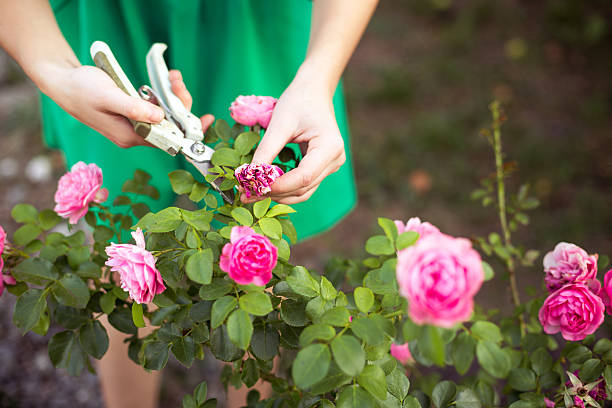The rose is one of the most popular and beautiful flowers. And the great thing about roses is that they thrive in almost every garden and there are many different varieties. Planting and caring for roses is not particularly difficult, provided you calm down a few rules.
Proper care for roses
If you want to have magnificent rose blossoms in the garden, it depends on the right care of these flowers. The rose belongs to the rose family and comes in many varieties. Above all, their different colors are magical and attract numerous rose lovers. A bouquet of roses has always served not only in the garden but also as a particularly romantic gift. So that you too can plant perfect roses, we have the most important tips for growing and caring for them.

1) Plant roses properly
The rose loves it sunny, you should take that to heart when planting roses. But it also thrives well in partial shade. Before planting, you should water the rose root sufficiently, for example by placing the whole pot or the root ball in a bucket of water for a few hours.
2) Spring pruning for roses
When the forsythia bushes bloom bright yellow, it’s time to dare to cut the roses. Bedding and hybrid tea roses in particular should be cut back every spring. As a result, you can stimulate them to bloom lushly, because the flowers only form on the fresh branches of these varieties. Those who orient themselves to the forsythia blossom are guaranteed to get the right time and risk no damage to the roses. Also, note tips for planting tomatoes.
3) Caring for roses with the right rose cut
There is a lot to consider when it comes to pruning roses. The most important thing is to remove the old and dead parts during spring pruning. Otherwise, you can also remove thinner branches generously, especially if the rose has not bloomed in the past year. A cut always runs just above a branch pointing outwards. Especially when pruning in spring, you can prune the rose vigorously.
4) Use a suitable tool for cutting
The right tools and great gadgets for gardening should not be missing. In order not to damage the rose, the scissors should be very sharp. Then the branches will not be crushed. Also, make sure that the edge is rather slanted when cutting. As a result, no rainwater will remain on the injured area and the edge will close cleanly. In addition, the surface of the cut edge should be as small as possible.
5) Water roses moderately
Watering tips should always be followed. Roses aren’t too thirsty, so don’t overdo it with the water. Watering them once or twice a week is often enough. If it rains, of course, there is no watering. It is more important to water the rose directly at the roots. In addition, the greatest dangers are lice and fungal diseases. But you can prevent them with moderate moisture and proper watering.
6) Nutrients for a lush rose bloom
Especially in spring, from the first cut, you should supply the rose with nutrients. A special rose fertilizer gives the roses everything they need. You can also use horse manure and compost for fertilizing. Horn shavings can also be used as fertilizer. You can then fertilize twice more in the course of the year – ideally also after the first flowering. It is very important not to fertilize too late. Fertilization can still be done in late summer. If you fertilize too late, the branches will not lignify enough and they could suffer frost damage.
7) Stimulate flowering
In order to enjoy the rose for a long time, you should regularly cut off faded flowers. After the first bloom ends, you can cut back a bit. The cut runs over the strongest bud. You should also water regularly and sufficiently in summer when it is hot to stimulate flowering.
8) Keep roses weed-free

To keep the soil weed-free, it is a good idea to combine the roses with other plants. Accordingly, a well-established neighbor is a beautiful lavender, as it goes perfectly with the roses. You should also regularly rake the soil around the rose, being careful not to damage the roots.
9) Winter protection for roses
Suitable winter protection for plants is essential for many plants. Although bed roses usually survive the winter without any problems, it can be helpful to take special care of roses in winter. Therefore, protect the root area from too much cold. To do this, pile leaves or brushwood about 30 cm high in the lower area. But be careful not to make the pile too dense.
10) Potted roses for the home
If you don’t want to do without beautiful roses at home, then choose potted roses. They should be as cool and bright as possible. Nevertheless, the roses usually suffer from a lack of light after a while. After flowering, it is often best to cut back the rose and place it outside or plant it directly in the bed. Then the rose can bloom again in the same year, provided you planted it in time.
